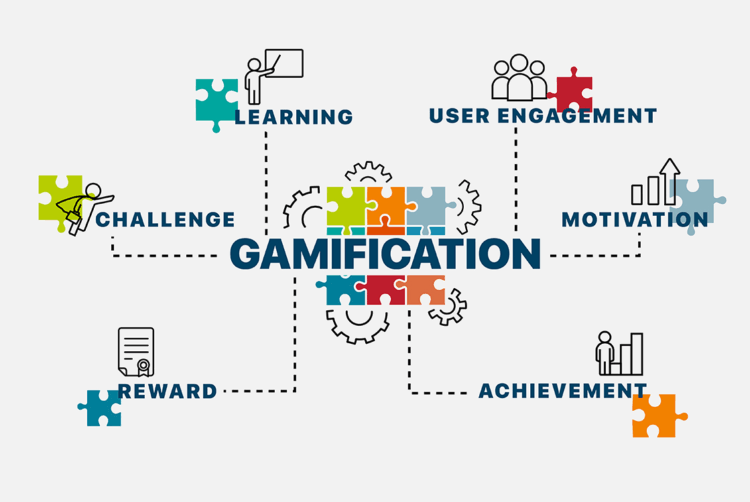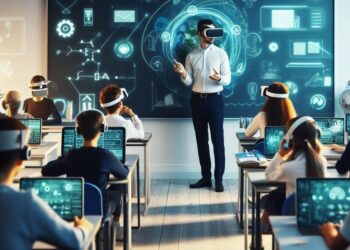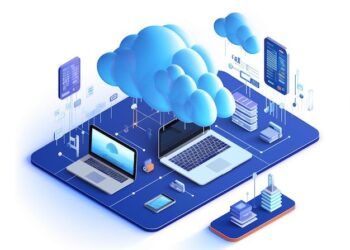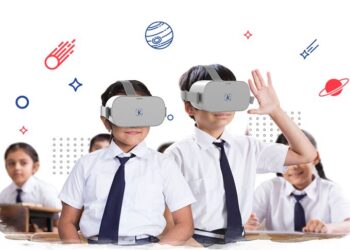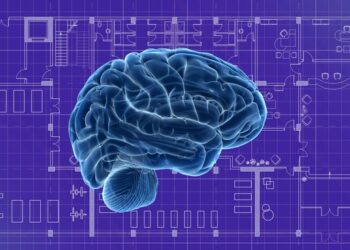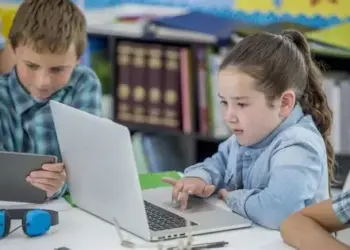The landscape of early childhood education has undergone a remarkable transformation in recent years, with gamification emerging as one of the most influential pedagogical approaches. This innovative methodology integrates game-like elements into traditional learning environments, creating engaging, interactive experiences that capture young learners’ attention while delivering educational content effectively.
Gamification in early education represents more than just playing games in the classroom. It encompasses a strategic approach to learning that leverages the natural human tendency toward play, competition, and achievement. By incorporating elements such as points, badges, leaderboards, and narrative storytelling into educational curricula, educators can create immersive learning experiences that motivate students and enhance knowledge retention.
The significance of this trend cannot be overstated. Research consistently demonstrates that gamified learning environments produce higher levels of student engagement, improved academic performance, and enhanced social-emotional development. As we navigate an increasingly digital world, understanding and implementing these gamification trends becomes crucial for educators, parents, and educational technology developers alike.
Understanding Gamification in Educational Contexts
Defining Educational Gamification
Educational gamification refers to the strategic application of game design elements and principles within learning environments to enhance student motivation, engagement, and educational outcomes. Unlike traditional gaming, educational gamification maintains a clear focus on learning objectives while incorporating entertaining elements that make the educational process more enjoyable and effective.
The core principle behind gamification lies in its ability to tap into intrinsic human motivations such as curiosity, achievement, social interaction, and personal growth. By creating structured challenges, providing immediate feedback, and offering meaningful rewards, gamified learning systems can transform passive students into active participants in their educational journey.
The Psychology Behind Gamified Learning
The effectiveness of gamification in early education stems from several psychological principles that align perfectly with how young children naturally learn and develop. Understanding these underlying mechanisms helps educators and developers create more effective gamified learning experiences.
Self-determination theory plays a crucial role in gamified learning success. This psychological framework identifies three fundamental human needs: autonomy, competence, and relatedness. Gamified learning environments address these needs by allowing students to make choices about their learning path, providing clear progression indicators, and facilitating social interactions with peers and educators.
Flow theory also contributes significantly to gamification effectiveness. When learners experience flow, they become completely absorbed in the learning activity, losing track of time and external distractions. Gamified learning systems achieve this state by carefully balancing challenge levels with student skills, ensuring that activities remain engaging without becoming overwhelming or boring.
Current Trends Shaping Educational Gamification
A. Adaptive Learning Technologies
Modern gamification platforms increasingly incorporate adaptive learning technologies that personalize the educational experience for each student. These systems use artificial intelligence and machine learning algorithms to analyze student performance, learning preferences, and engagement patterns, automatically adjusting content difficulty, pacing, and presentation style to optimize individual learning outcomes.
Adaptive gamification systems can identify when students are struggling with specific concepts and provide additional practice opportunities through engaging mini-games or challenges. Conversely, when students demonstrate mastery of particular skills, the system can introduce more advanced concepts or alternative learning paths to maintain optimal challenge levels.
B. Virtual and Augmented Reality Integration
The integration of virtual reality (VR) and augmented reality (AR) technologies represents one of the most exciting frontiers in educational gamification. These immersive technologies transport students into virtual learning environments where abstract concepts become tangible, interactive experiences.
In early childhood education, AR applications can overlay digital information onto the physical world, turning ordinary classrooms into interactive learning spaces. Students might use tablets or smartphones to discover hidden educational content, solve puzzles, or interact with virtual characters that guide them through learning activities.
VR environments offer even more immersive experiences, allowing young learners to explore historical sites, conduct virtual science experiments, or practice language skills in simulated real-world scenarios. These technologies make learning more memorable and engaging by providing multi-sensory experiences that traditional teaching methods cannot match.
C. Social Learning and Collaboration Features
Contemporary gamification trends emphasize collaborative learning experiences that foster social interaction and peer-to-peer learning. Modern educational games incorporate features that allow students to work together toward common goals, share achievements, and learn from one another’s experiences.
Multiplayer educational games enable students to form teams, compete in friendly competitions, and support each other’s learning progress. These collaborative elements develop crucial social skills while reinforcing academic concepts through peer interaction and discussion.
D. Microlearning and Bite-Sized Content
The trend toward microlearning reflects the understanding that young children learn most effectively when information is presented in small, digestible chunks. Gamified learning platforms increasingly organize content into brief, focused modules that can be completed in short time periods.
This approach aligns perfectly with children’s natural attention spans and allows for flexible learning schedules that accommodate various classroom structures and individual learning needs. Microlearning also enables more frequent assessment and feedback opportunities, helping educators track student progress more effectively.
E. Cross-Platform Accessibility
Modern educational gamification solutions prioritize cross-platform compatibility, ensuring that learning experiences remain consistent across different devices and operating systems. This accessibility enables seamless transitions between classroom computers, tablets, smartphones, and home devices, supporting continuous learning both inside and outside traditional educational settings.
Cloud-based platforms store student progress and achievements across all devices, allowing learners to pick up where they left off regardless of which device they’re using. This flexibility supports modern educational approaches that blend in-person and remote learning experiences.

Implementation Strategies for Educators
A. Assessment and Planning Phase
Successful gamification implementation begins with thorough assessment of existing curricula, student needs, and available resources. Educators must identify specific learning objectives that would benefit from gamified approaches and evaluate how these strategies align with established educational standards and requirements.
During the planning phase, educators should consider factors such as student age groups, technological infrastructure, budget constraints, and teacher training requirements. This comprehensive assessment ensures that gamification initiatives are sustainable and effective within the specific educational context.
B. Technology Integration and Training
Effective gamification implementation requires adequate technological infrastructure and comprehensive teacher training programs. Educational institutions must invest in reliable hardware, software licenses, and technical support systems to ensure smooth operation of gamified learning platforms.
Teacher training programs should cover both technical aspects of gamification tools and pedagogical strategies for integrating game-based learning into existing curricula. Professional development opportunities help educators understand how to balance entertainment value with educational objectives, ensuring that gamified activities contribute meaningfully to student learning outcomes.
C. Student Engagement Strategies
Successful gamification implementation requires careful attention to student engagement strategies that maintain motivation over extended periods. Educators must design reward systems that encourage intrinsic motivation rather than solely relying on external incentives.
Progress tracking and achievement recognition systems should celebrate both individual accomplishments and collaborative successes. Regular feedback and encouragement help students understand their learning progress and identify areas for improvement, fostering a growth mindset that extends beyond gamified activities.
D. Parent and Community Involvement
Engaging parents and community members in gamified learning initiatives enhances their effectiveness and sustainability. Educational institutions should provide resources and training that help parents understand and support gamified learning activities at home.
Community partnerships can provide additional resources, expertise, and real-world contexts for gamified learning experiences. Local businesses, museums, libraries, and cultural organizations can contribute to educational games that connect classroom learning with community experiences and career exploration opportunities.
Benefits and Advantages of Educational Gamification
Enhanced Student Motivation and Engagement
Research consistently demonstrates that gamified learning environments produce significantly higher levels of student engagement compared to traditional instructional methods. The interactive nature of educational games captures students’ attention and maintains their focus for longer periods, leading to improved learning outcomes and academic performance.
The immediate feedback mechanisms inherent in gamified systems provide students with constant reinforcement and encouragement, helping them stay motivated even when encountering challenging concepts. This real-time feedback helps students understand their progress and adjust their learning strategies accordingly.
Improved Knowledge Retention and Transfer
Gamified learning experiences create memorable, meaningful contexts that enhance long-term knowledge retention. The multi-sensory nature of many educational games engages multiple learning pathways, reinforcing information through visual, auditory, and kinesthetic channels.
The problem-solving and critical thinking skills developed through educational games often transfer to other academic areas and real-world situations. Students learn to approach challenges systematically, think creatively, and persist through difficulties – skills that benefit them throughout their educational journey and beyond.
Development of 21st Century Skills
Educational gamification naturally develops many of the skills essential for success in the modern world. These include digital literacy, collaboration, communication, creativity, critical thinking, and adaptability – competencies that traditional educational approaches often struggle to address effectively.
Through gamified learning experiences, students develop comfort with technology, learn to work effectively in teams, and practice communicating their ideas clearly. These experiences prepare them for future educational and career opportunities in an increasingly digital and interconnected world.
Personalized Learning Experiences
Gamified learning platforms can accommodate diverse learning styles, preferences, and abilities within the same classroom environment. Students can choose different paths through educational content, work at their own pace, and receive personalized feedback that addresses their specific needs and interests.
This individualization ensures that all students can experience success and make meaningful progress, regardless of their starting point or learning challenges. The flexibility of gamified systems supports inclusive education practices that benefit learners with diverse needs and backgrounds.
Challenges and Considerations
A. Technology Access and Equity Issues
One of the most significant challenges in implementing educational gamification is ensuring equitable access to necessary technology and internet connectivity. Socioeconomic disparities can create digital divides that prevent some students from fully participating in gamified learning experiences.
Educational institutions must develop strategies to address these equity issues, such as device lending programs, partnerships with community organizations, and the creation of offline alternatives for digital activities. Ensuring equal access to gamified learning opportunities is essential for preventing the exacerbation of existing educational inequalities.
B. Balancing Entertainment and Educational Value
Effective educational gamification requires careful balance between entertainment value and educational content. Games that prioritize fun over learning objectives may engage students initially but fail to produce meaningful educational outcomes. Conversely, educational content that lacks engaging game elements may not achieve the motivational benefits that gamification is intended to provide.
Educators and developers must work together to create experiences that seamlessly integrate learning objectives with engaging gameplay mechanics. This balance requires ongoing evaluation and adjustment based on student feedback and learning outcome data.
C. Teacher Training and Professional Development
The successful implementation of educational gamification requires comprehensive teacher training and ongoing professional development support. Many educators may feel uncomfortable with game-based learning approaches or lack the technical skills necessary to effectively implement gamified activities in their classrooms.
Educational institutions must invest in robust professional development programs that address both technical and pedagogical aspects of gamification. These programs should provide ongoing support and opportunities for educators to share experiences and best practices with their peers.
D. Assessment and Evaluation Challenges
Traditional assessment methods may not effectively capture the learning outcomes achieved through gamified experiences. Educators need new approaches to evaluation that account for the collaborative, process-oriented nature of many game-based learning activities.
Developing appropriate assessment strategies for gamified learning requires careful consideration of learning objectives, game mechanics, and desired outcomes. Portfolio-based assessments, peer evaluations, and performance analytics embedded within games themselves may provide more accurate measures of student learning than traditional tests and quizzes.
Future Outlook and Emerging Technologies
Artificial Intelligence and Machine Learning Integration
The future of educational gamification will likely see increased integration of artificial intelligence and machine learning technologies that provide even more personalized and responsive learning experiences. AI-powered systems will be able to analyze student behavior patterns, predict learning difficulties, and automatically adjust content and difficulty levels in real-time.
These advanced systems will also provide educators with detailed insights into student learning processes, helping them identify effective instructional strategies and intervene when students need additional support. The combination of gamification and AI promises to create truly adaptive learning environments that respond to individual student needs with unprecedented precision.
Blockchain Technology for Achievement Verification
Blockchain technology may revolutionize how educational achievements and progress are recorded and verified in gamified learning systems. Distributed ledger systems could provide secure, permanent records of student accomplishments that are recognized across different educational institutions and platforms.
This technology could enable the creation of comprehensive digital portfolios that follow students throughout their educational journey, providing detailed records of skills, competencies, and achievements that extend beyond traditional academic transcripts.
Internet of Things (IoT) Integration
The integration of Internet of Things (IoT) devices with educational gamification platforms opens new possibilities for immersive, context-aware learning experiences. Smart classroom environments could automatically adjust lighting, temperature, and audio levels based on game activities and student engagement levels.
Wearable devices could monitor student physiological responses and attention levels, providing additional data for personalizing learning experiences and ensuring optimal engagement without overstimulation.
Best Practices for Implementation
A. Start Small and Scale Gradually
Successful gamification implementation often begins with small pilot programs that allow educators to test approaches, gather feedback, and refine strategies before broader implementation. Starting with a single subject area or grade level enables thorough evaluation and adjustment of gamification strategies.
Gradual scaling allows educational institutions to address challenges and build expertise progressively, ensuring that larger implementations benefit from lessons learned during initial phases. This approach also allows for better resource allocation and staff development planning.
B. Focus on Learning Objectives First
Effective educational gamification always begins with clear learning objectives and curriculum standards. Game elements should be selected and designed specifically to support these educational goals rather than being added as superficial enhancements to existing content.
Regular evaluation of learning outcomes ensures that gamification strategies continue to serve educational purposes effectively. If game elements are not contributing to desired learning outcomes, they should be modified or removed to maintain focus on educational effectiveness.
C. Encourage Collaboration and Social Learning
The most effective educational games incorporate collaborative elements that encourage peer interaction and social learning. These features help students develop communication skills, learn from different perspectives, and build supportive learning communities.
Designing collaborative challenges and group projects within gamified environments creates opportunities for students to practice teamwork skills while reinforcing academic content through peer discussion and shared problem-solving experiences.
D. Provide Ongoing Support and Professional Development
Sustainable gamification implementation requires ongoing support for educators, including regular professional development opportunities, technical assistance, and peer collaboration networks. Creating communities of practice allows educators to share experiences, troubleshoot challenges, and develop innovative applications of gamification principles.
Regular evaluation and feedback collection from both educators and students provides valuable information for improving gamification strategies and ensuring continued effectiveness over time.

Conclusion: Embracing the Gamified Learning Future
The integration of gamification principles into early childhood education represents a significant evolution in pedagogical approaches that aligns with how children naturally learn and develop. As technology continues to advance and our understanding of effective learning strategies deepens, gamification will undoubtedly play an increasingly important role in educational innovation.
The trends discussed in this article – from adaptive learning technologies to virtual reality integration – demonstrate the vast potential for creating engaging, effective learning experiences that prepare students for success in an increasingly complex and interconnected world. However, realizing this potential requires thoughtful implementation, adequate resources, and ongoing commitment from educators, administrators, and communities.
The future of education lies not in choosing between traditional and gamified approaches, but in thoughtfully integrating the best elements of both to create comprehensive learning experiences that address the diverse needs of all students. By embracing gamification trends while maintaining focus on educational objectives and equity, we can create learning environments that inspire curiosity, foster creativity, and prepare students for lifelong success.
As we move forward, continued research, professional development, and collaboration between educators, developers, and researchers will be essential for maximizing the benefits of educational gamification while addressing its challenges. The children in our classrooms today will inherit a world shaped by technology and innovation – our responsibility is to prepare them with the skills, knowledge, and enthusiasm for learning that will enable them to thrive in that future.
The gamification revolution in early education is not just about making learning more fun – it’s about creating more effective, engaging, and equitable educational experiences that unlock every child’s potential and prepare them for a lifetime of learning and growth.

